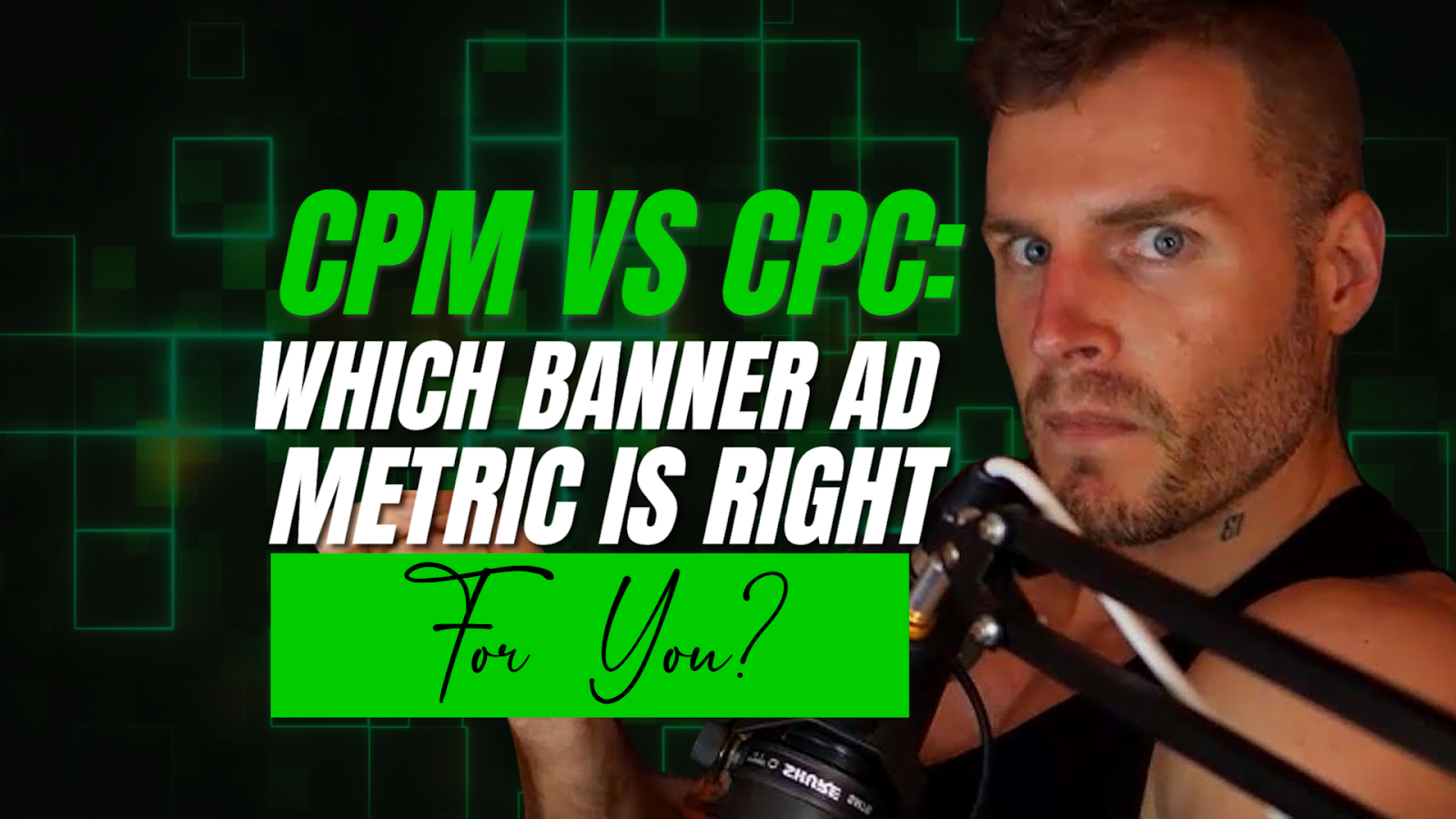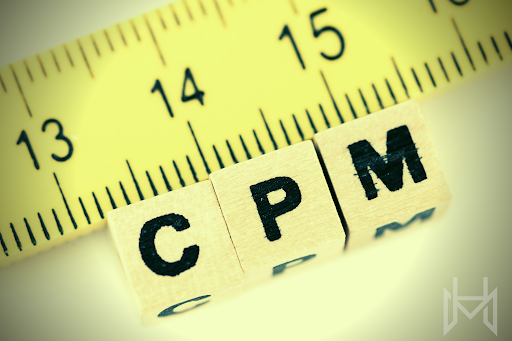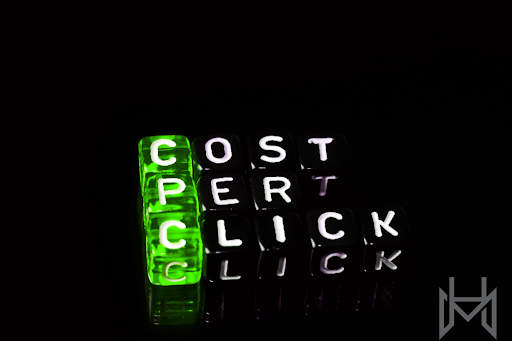
CPM vs CPC: Which Banner Ad Metric Is Right for You?
Are you looking to advertise your business online? Banner ads are a popular way for companies to attract customers, making them an essential part of any digital marketing strategy. Choosing the right banner ad metrics is crucial for giving your campaigns the best chance of success. So which should you choose: CPM or CPC?
To decide between CPM and CPC for your online advertisement, it’s important to understand what each metric means, how they work, and the advantages and disadvantages of each. With this knowledge, you can make an informed decision about which banner ad metric is the best fit for your business needs. Let’s take a closer look.
What Is CPM and How Does It Work?

CPM stands for cost per mille, which translates to a cost per 1,000 impressions. It’s a metric used in online advertising that measures the cost of a campaign based on the total number of impressions it generates. CPM campaigns are charged based on every 1,000 people who view your advertisement.
To calculate CPM, multiply the ad cost by 1,000 and divide it by the total number of impressions. For example, if an ad costs $10 and generates 2,000 impressions, its CPM would be $5 (10 x 1,000 / 2,000).
The Advantages of Using CPM
Here are some of the advantages of using CPM for your online advertising campaigns :
- CPM is an excellent metric for businesses looking to increase brand awareness, as it allows companies to reach a large audience without breaking the bank.
- CPM campaigns can help businesses save costs by allowing them to set a fixed budget for a certain number of impressions. This makes budgeting easier and more efficient.
- They may result in higher click-through rates since no cost is associated with clicks. This allows businesses to focus more on the quality of their ad content and less on the cost of each click.
The Disadvantages of Using CPM
Like all metrics, CPM has its drawbacks, listed as follows:
- CPM is not ideal for campaigns focused on driving conversions or sales, as it does not measure the click-through rate (CTR) or provide insight into user engagement and behavior.
- It can be difficult to accurately measure the success of a CPM campaign as it does not track individual interactions with the ad.
- CPM campaigns can be expensive if the ad is not optimized for maximum impressions.
What Is CPC and How Does It Work?

CPC stands for cost per click, a metric used in online advertising that measures the cost of a campaign based on the total number of clicks it generates. Unlike CPM, with CPC campaigns, businesses are charged only when someone clicks on their ad. The cost is determined by how much the advertiser bids for each click.
To calculate CPC, you divide the total cost of your clicks by the total number of clicks. For example, if you spend $50 to generate 10 clicks, your CPC would be $5 (50 / 10).
A company sets its maximum bid amount, and then the ad exchange matches the ad with a publisher willing to accept that price or lower. The CPC is determined by how much competition there is for the ad. If many advertisers are bidding on the same placement, the cost per click will be higher.
The Advantages of Using CPC
CPC campaigns offer several advantages. Here are some of the reasons why using them may be beneficial for your online advertising campaigns:
- With CPC, businesses can control their ad spend more effectively, as they are only charged when someone clicks on their ad. This makes it easier for you to track ROI and measure the performance of your ad campaigns.
- CPC campaigns are ideal for businesses looking to drive conversions, as they allow them to focus on the quality of their content and user engagement to maximize clicks.
- As CPC campaigns have a higher click-through rate than CPM campaigns, they can reach more potential customers and generate more leads. This is especially beneficial if you’re looking to increase your customer base.
The Disadvantages of Using CPC
CPC campaigns can be excellent in generating leads and conversions, but they come with some disadvantages. Here are some of the drawbacks of using this metric:
- As CPC campaigns have higher click-through rates, businesses may need to increase their ad spend to keep up with the competition. This can become costly over time and may not be suitable if you have a limited budget.
- CPC campaigns are not ideal for brand awareness campaigns, as they focus more on generating clicks and conversions than increasing visibility.
- Because businesses are only charged when someone clicks on their ad, tracking ROI may be more difficult than with CPM campaigns.
Which Metric Is Right for You?

Choosing the right online advertising pricing model will help you maximize your return on investment, allowing you to tailor your campaigns to reach your goals. To make sure you select the best option for your campaign, consider these key questions:
1. What Is the Objective of the Campaign?
The campaign objectives should be the main factor in deciding which ad metric is best for you. If your primary goal is to increase brand awareness, then CPM may be a better option, as it allows you to reach more people without having to pay for each click. On the other hand, if you’re looking to drive conversions and maximize ROI, CPC campaigns may be the better choice.
2. What Is Your Budget?
CPC campaigns may be more cost effective for businesses with limited budgets than CPM. Since they are only charged when someone clicks on their ad, advertising campaign costs can be kept relatively low. However, combining both metrics may be beneficial if your budget is flexible.
On the other hand, CPM campaigns offer a more cost-effective way to reach potential customers at scale. With CPM campaigns, you are charged based on the number of impressions your ad receives rather than the number of clicks. This means that cost per impression is generally lower than with CPC campaigns, making them ideal for businesses with large budgets and high-reach goals.
3. Who Is the Target Audience?
The type of audience segments you are targeting can also influence which metric is right for you. For instance, if you are targeting an audience that is more likely to engage with content, then CPM may be more suitable. This is because CPM campaigns focus on increasing brand visibility, whereas CPC campaigns focus more on clicks and conversions.
CPC campaigns could be better if your target audience is more likely to convert. You will only be charged when someone clicks on your ad, allowing you to maximize the percentage of people that go from clicking to converting.
Make an Informed Decision to Achieve Your Goals
Choosing the right banner ad metric for your campaign is an important decision. CPM and CPC are effective metrics that have their own advantages and disadvantages and should be considered carefully before making a decision. Ultimately, deciding which metric best meets your objectives, budget, and target audience is up to you.
Whether you opt for CPM or CPC, remember to analyze your data, consult with experts and be willing to experiment until you find the right approach for your campaign. With the right metric chosen, you can reach your goals and make an effective ad campaign. Take action now and start reaching your target customers.
